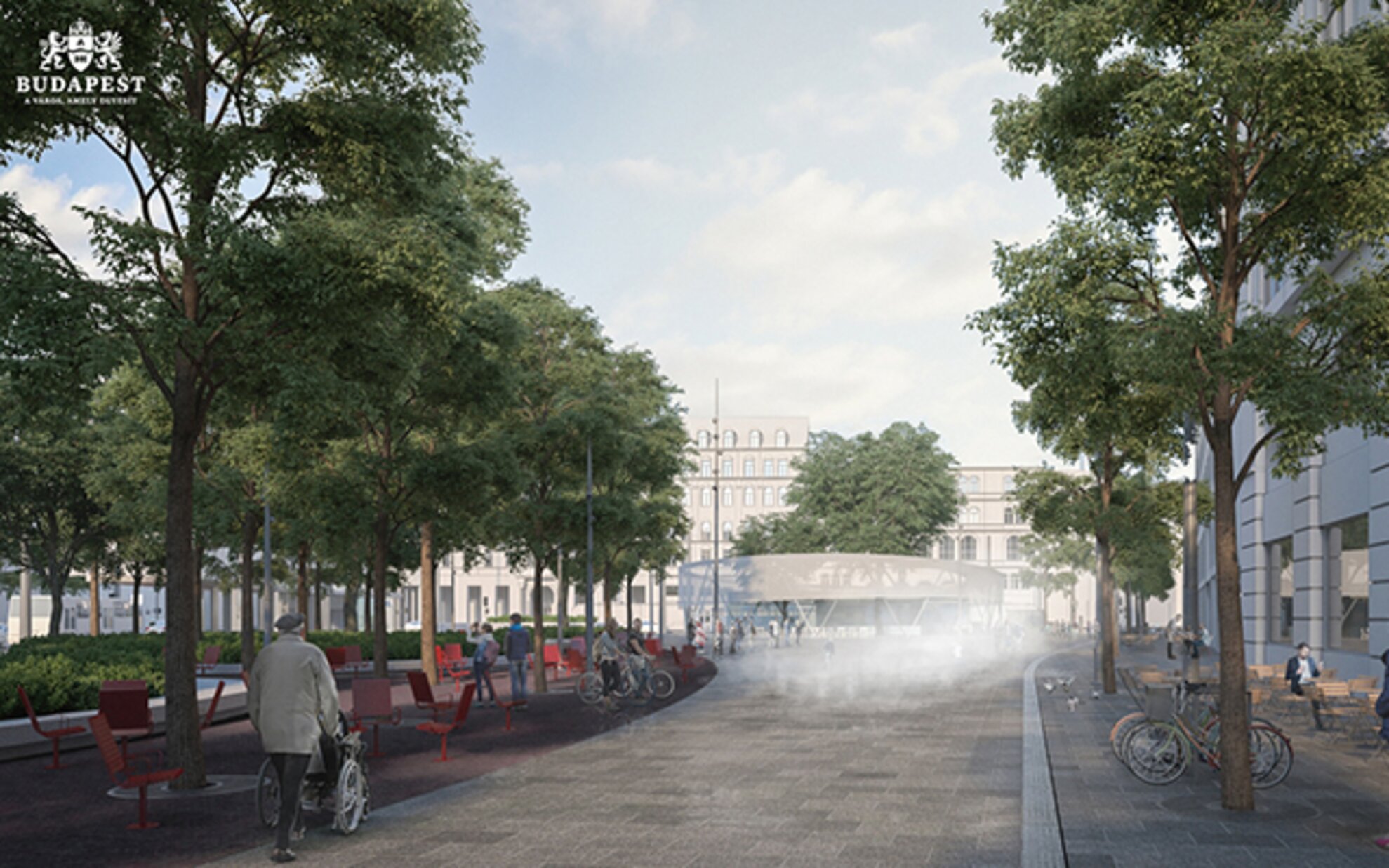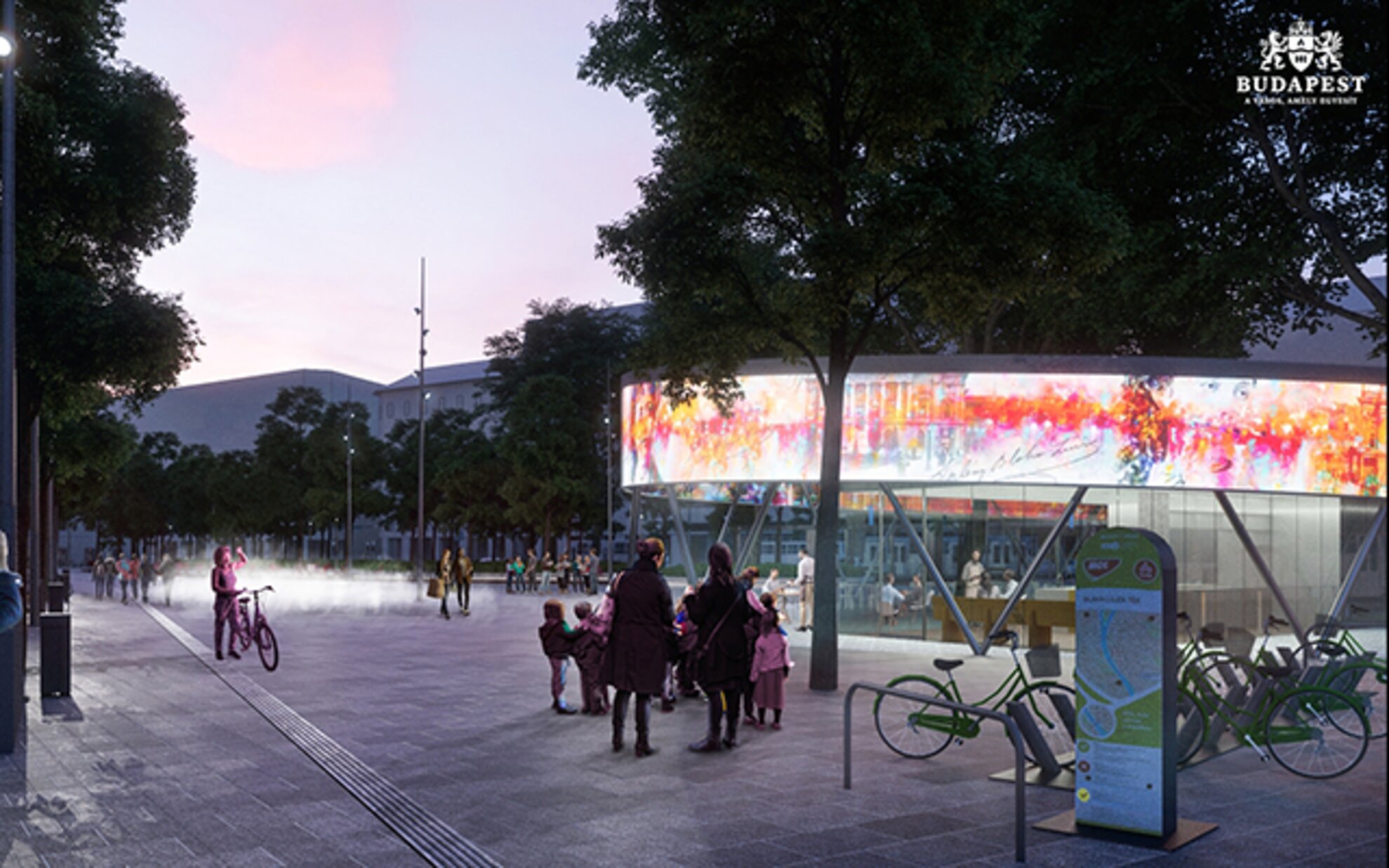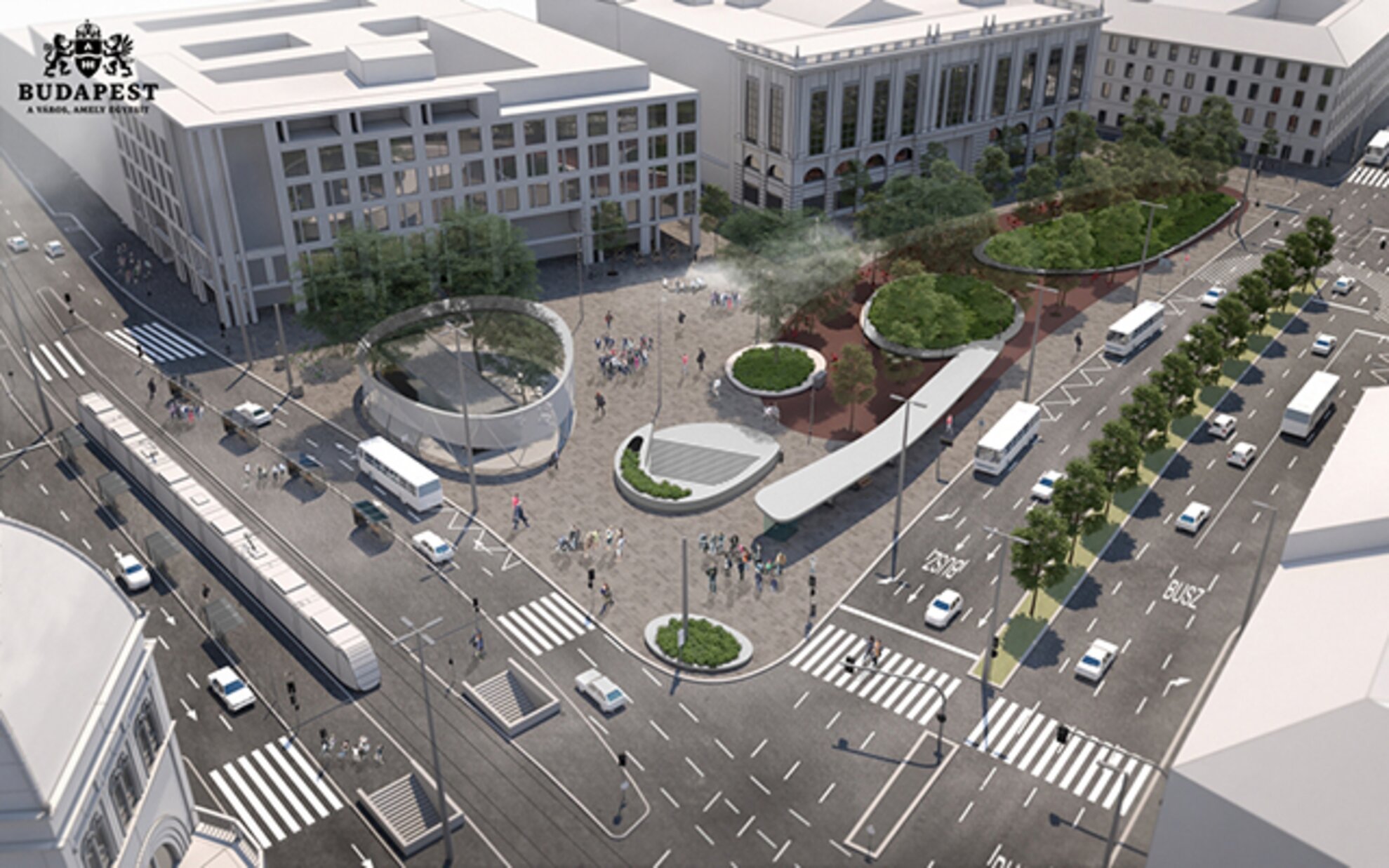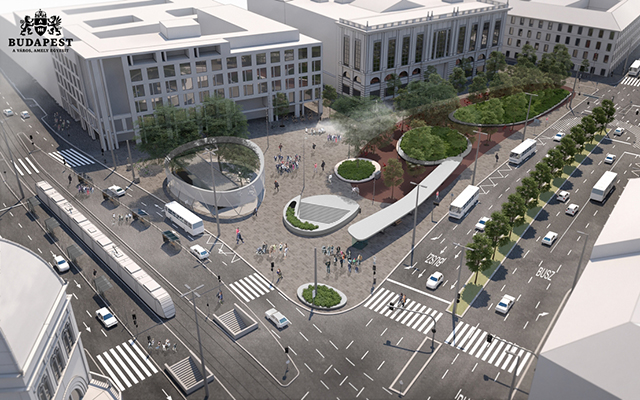Green space, a new cultural centre and aquatic attractions will feature at gentrifying Blaha Lujza tér, a long-neglected but busy transport hub, where the metro 2 line meets ever-crowded trams 4/6. City officials confirm that construction will start this autumn and should last for about a year.
No more death-defying crossing of multi-lane Rákóczi út in rush hour. According to plans, new zebra crossings will be installed to provide Blaha Lujza tér with greater accessibility, all part of the square’s upcoming renovation starting this autumn. Named after a famous Hungarian actress, the square is one of Budapest’s busiest transport hubs.

Backdropped by the Communist-era Corvin Department Store, whose façade is currently receiving a facelift, Blaha Lujza tér was once the site of the historic National Theatre, which was demolished in 1965 to make room for the new metro line 2. A modern-day National Theatre was later rebuilt at the Millennial Cultural Centre by the riverfront in south Pest.

Today, a rushing mass of more than 200,000 people, a never-ending flurry of cars, buses, metro trains and trams define this central transport hub, a subject for long-dragging debates about its renovation.
According to plans, the infamously unappealing Blaha underpass will get a makeover, a major step warmly anticipated by many who cross the subterranean walkway regularly. Developments also include the installation of lifts serving the underpass that will welcome a customer service centre by the BKK city transport company and public toilets.

At street level, the current parking zone outside the Corvin store will be transformed into a new parkland with more trees and benches. By the Grand Boulevard, a new cultural centre will be erected.
The current mushroom-shaped water fountain will be removed from the square to provide space for other aquatic attractions, including a humidifier during summer. The reconfiguration also calls for better traffic control in the vicinity.




